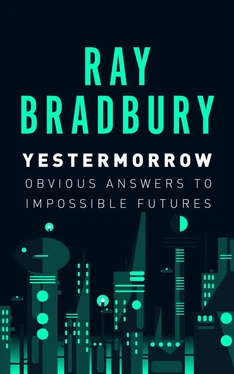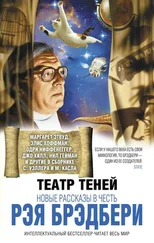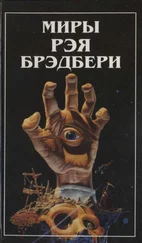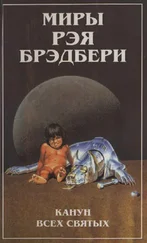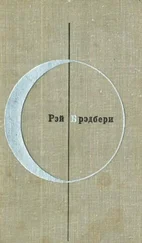We are limping out of the areas of “new is good, old is bad,” “functional logic as the sole concern of form-making,” and the idea that exhibitionist object-making is the epitome of architectural achievement. What Bradbury talks about is the conscious construction of experience, the design of time, the vocabulary of aliveness.
Ray’s influence on my designer’s mind began back in my teenage years when I fully experienced his elaborately real places and moods constructed out of mosaics of such sensory stimuli as full-moon-October-leaf-light, the joy of ascending upward in spherical patterns, intimacy and fresh-cut lawn, the mind-expanding nature of a Santa Ana wind and the spiritual symbolism of giggling kids and the corner soda fountain. Ray taught me that urban placemaking has far more to do with these kinds of concerns than issues of architectural fashion, or urban design pattern making. First, and foremost, cities are about life and its derivative set of experiences. Only secondarily are they about objects.
Ray writes that the metropolis of Los Angeles is really “…80 or 90 separate lonely Ohio-Illinois-Kansas-style towns….” He says that what is missing are the 80 or 90 communal spaces, charged with activities fashioned to suit the neighborhood, that would give us the opportunity to “gather and stare” and reinstate a feeling of individual belonging, pride and sensibility into the city.
Because of size, metropolitan Los Angeles is not perceivable as a place—at best, it is an abstract amorphous gridded field of sameness. Actually the field is made up of “micropolises,” a series of nested neighborhoods or districts, each with subtle but distinct individualities of use, topography, landscape, ecology and inhabitants. Los Angeles becomes comprehensible—no longer abstract—as these micropolises (areas such as Westwood, Little Tokyo, Santa Monica, Silverlake and Pasadena) assume a more identifiable and individual presence. Each micropolis requires a heart, a center, complete with all of the uses, symbols, communal spaces ( a la Ray’s plaza) to make it recognizable, identifiable and relatable. Chris Leinberger, in an article published in The Atlantic (January 1988) refers to these as urban villages.
Creating the 80 to 90 micropolises is precisely what is needed to move Los Angeles on its way from its first growth, suburban hard-to-love-or-comprehend boom town paradise to the beginnings of the twentieth century’s first working model macropolis. Micropolis-making requires everything Bradbury suggests and more, dealing with density, theme, design languages. The net effect produces the much-sought-after answer to big sections of the growth/quality of life issue—i.e., better job/housing balance, reduced travel, vital neighborhoods, improved environments, community pride and identity.
Over the years, Ray and I have collaborated on various real and unreal projects. Working with him is a delight… he is not normal. Interacting with him is like talking to a chortling fireplace—things like gravity or the impossible are vague concepts to him. His ideas about Los Angeles are pure; he understands the essential spirit and parts of the city as no other.
Previously published essays in this collection originally appeared in the following publications, to whose editors and publishers thanks are due.
“The Voyage to Far Metaphor and Elephant India: A Preface.” Developed from an original essay entitled “Metaphor Is Everything,” Windows , Summer-Fall, 1986.
“Art and Science Fiction.” The Universe , ed. by Byron Preiss. Bantam, 1987.
“The Girls Walk This Way; The Boys Walk That Way.” West: The Los Angeles Times Magazine , April 5, 1970.
“The Aesthetics of Lostness.” Designers West , November 1988.
“Who Owns What and Which and Why.” Designers West , December 1990.
“To Be Transported.” Designers West , December 1988.
“The Great American What Am I Doing Here and Why Did I Buy That? Hardware Store.” Designers West , June 1987.
“The Aesthetics of Size.” Designers West , September 1987.
“Yestermorrow Place.” Designers West , March 1987.
“Yes, We’ll Gather at The River.” Designers West, June 1988.
“Go Not to Graveyards.” Designers West, November 1987.
“Day After Tomorrow.” The Nation, May 2, 1953.
“Renaissance Prince and the Baptist Martian.” Horizon, July 1979.
“Frederico Fellini.” The Los Angeles Times Book Review, Sunday, November 27, 1977.
“The Hipbone of Abraham L.” Developed from an original essay entitled, “Why Disney Will Live Forever,” first published in Mickey Is Sixty, August 1988.
“Beyond 1984: The People Machines.” Cities: The Forces That Shape Them, ed. by Lisa Taylor. Rizzoli, 1982.
“A Feasting of Thoughts, A Banqueting of Words.” Performing Arts, October 1975.
“Science Fiction: Before Christ and After 2001.” First published as an introduction to Science Fact/Fiction, ed. by E.J. Farrell and others. Scott, Foresman, 1974.
“Grand Tour 2484.” The Los Angeles Times, March 25, 1984.
“An Afterword by Jon A. Jerde, AIA.” Designers West, July 1989.

New York, 2017
Yestermorrow
Copyright © 1991 by Ray Bradbury Enterprises
All rights reserved. No part of this book may be used or reproduced in any form or by any electronic or mechanical means, including information storage and retrieval systems, without permission in writing from the publisher, except by a reviewer who may quote brief passages in a review.
Electronic edition published 2017 by RosettaBooks
Cover design by Christian Fuenfhausen
ISBN (EPUB): 9780795350498
ISBN (Kindle): 9780795350504
www.RosettaBooks.com
